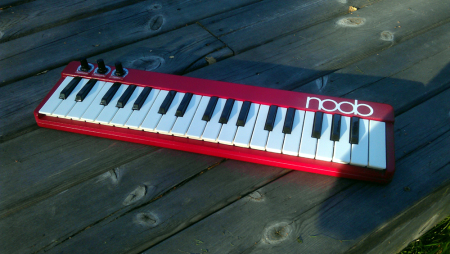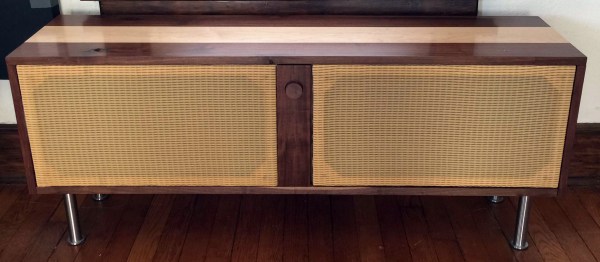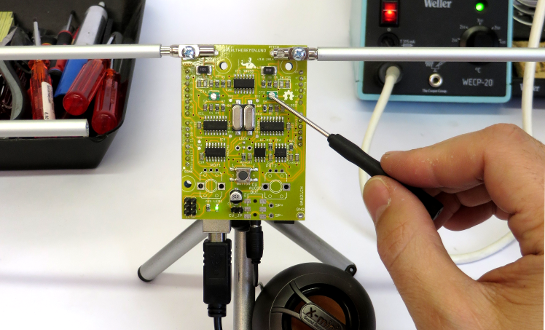You could sometimes be forgiven for thinking that making popular music has become too easy. With a laptop and suitable software almost anybody can now assemble something that had they secured the services of a canny promoter would be in with a shot at stardom. So many performances have been reduced to tightly choreographed dance acts to mask the absence of musicians or indeed musical talent, and our culture is poorer for it. It’s not that music made with modern technology or outside the performance is an indicator of lack of talent, indeed when a truly talented musician makes something with the resources of a modern technology the results are astounding. Instead it perhaps seems as though the technology is cheapened by an association with mediocrity when it should be a tool of greatness.
So it was with pleasure that we noticed a fresh project on Hackaday.io this morning which provides a marriage of accessible music technology and a requirement for performance. [Ernest Warzocha] has made a wooden sequencer.
It’s true, audio sequencers are old hat, so a new one will have to work hard to enthuse a seasoned Hackaday reader who’s seen it all. What makes [Ernest’s] sequencer different is that he’s made one with a very physical interface of wooden pucks placed in circular recesses on a wooden surface. Each recess has an infra-red reflective sensor that detects the surface texture of the puck placed in it and varies the sample it plays accordingly. It’s all held together underneath by an Arduino, and MP3 samples are played by a Sparkfun MP3 shield. At a stroke, he has turned the humble sequencer from a workaday studio tool into a performance art form that you can see in the video below, and we like that.
Home made sequencers have a special place in maker culture, and as you might expect over the years we’ve featured quite a few of them. Shift registers, CMOS analogue switches or even turntables as the sequencer elements, Lego as a human interface, a sequencer made from a cash register, and a rather lovely steampunk sequencer, to name but a few. So this one joins a rich tradition, and we look forward to more in the future.
Continue reading “A Wooden Performance Is Fine WIth This Sequencer”


















